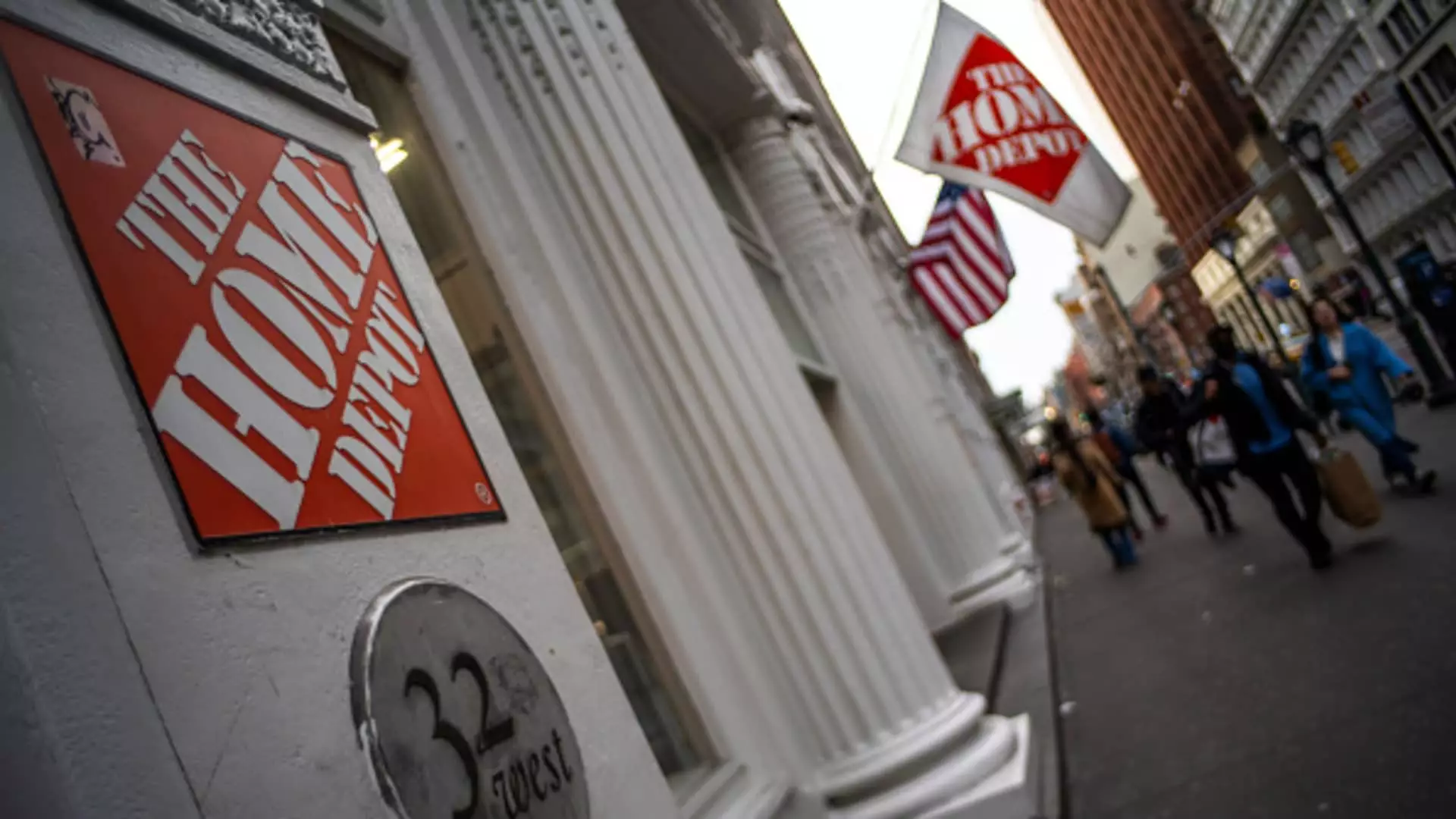Recent survey findings reveal a paradox when it comes to the outlook of contractors—particularly painters and remodelers—in the U.S. Despite a climate riddled with economic uncertainty and fluctuating housing market dynamics, many professionals in the field are experiencing a wave of optimism. Morgan Stanley’s survey, which included insights from 94 general contractors and 37 specialists, indicates that these professionals are looking toward the second half of 2025 with a positive frame of mind. They anticipate an uptick in business activity as demand shifts toward larger projects. This raises critical questions about what fuels this optimism and how companies like Home Depot can leverage it.
The essence of this confidence can be traced to contractors’ robust project backlogs and a belief that larger jobs remain sought after, even as some clients may consider smaller alternatives. The implication here is profound—the construction and remodeling industries could be on the cusp of renewed growth, signifying a pivotal moment for retail giants like Home Depot, which thrive on consumer demand for renovation materials and tools.
Inflation and Tariff Woes: A Silver Lining or a Dark Cloud?
Turn our attention now to the darker undercurrents of this optimism. While contractors are largely confident, they remain acutely aware of the economic pressures imposed by inflation and the specter of tariffs. Morgan Stanley notes that tariffs consistently rank among the biggest concerns. While the researchers gathered this data prior to significant policy announcements, one can only speculate how contractor sentiments might have shifted following tariff developments.
Inflation naturally erodes purchasing power, raising the question: will consumers still feel incentivized to invest in remodeling and renovations? There lies an irony: higher project costs may drive some homeowners to prolong essential repairs, while others may opt to go through with big projects that could raise their home’s value. The impact of tariffs on supply chains is equally precarious, potentially causing spikes in material costs that could rattle industry confidence just as it’s on the verge of resurgence.
Home Depot’s Strategic Moves: A Response to External Pressures
Home Depot’s management is clearly attuned to these market fluctuations. Their recent commentary expressing commitment to effectively navigating tariff impacts and managing vendor relationships for customer benefit reflects a proactive approach. The leadership acknowledges that over 40% of the U.S. housing stock is over 40 years old—a significant revelation. This means that this aging infrastructure necessitates comprehensive remodeling and refurbishing, which Home Depot can capitalize on, provided they adapt quickly to market realities.
CEO Ted Decker suggests that the company’s strategy revolves around facilitating home improvement projects rather than simply selling products. The essence of creating value through service is a critical part of the Home Depot narrative that distinguishes it from other retailers. Investors are likely to find that positioning yourself as a go-to solution provider, especially in a time of need, can lead to lasting customer loyalty.
The Investor’s Perspective: Trending Positive Signal
For investors, the whispers of a forthcoming bullish trend in the housing market are enticing. Jim Cramer’s encouragement to remain “long on Home Depot” echoes an uplifting sentiment among stakeholders. The impact of lower mortgage rates—hovering below 6.5%—can act as a catalyst for housing activity while propelling sales for Home Depot. This insight underscores the interconnected nature of sectors; a resurgence in the housing sector can help boost business in home improvement retail.
Moreover, Home Depot’s strategic acquisition of SRS Distribution for $18.25 billion signals a deliberate pivot toward solidifying its foothold in the professional contractor segment. This move illustrates an enduring commitment to growth and adaptability—particularly vital as DIY sales are now lagging behind professional ones.
A Bright Yet Cautious Outlook
As the next well-deserved chapter unfolds for Home Depot, external stresses still loom large. The looming uncertainties stemming from tariffs and inflation call for a delicate balance between optimism and pragmatism. Contractors are evidently displaying resilience and an eagerness to adapt, and this spirit of innovation is where Home Depot can thrive. Retailers in this sector must remain attuned to the subtle movements of the economic landscape, with the underlying sentiment being that opportunities abound, provided businesses adapt to the evolving currents.
For now, Home Depot’s integration of service, adaptability, and a focus on long-term client relationships seem poised to set them apart in a competitive environment, signifying a potential renaissance for both the retailer and the home improvement industry at large.

